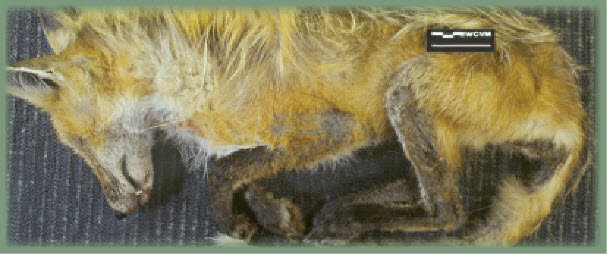Sarcoptic Mange
| Question | Answer |
|---|
| Example |

|
| Can I still use the animal |
Yes - just doesn't look nice |
| Commonly infected wildlife |
Canines, Any Mammal |
| Is this animal infected |
- Infected animals show varying degrees of hair loss, usually on the legs and tail, but over most of the body in severe cases
- Some animals may have thickened skin
- Badly infected animals are in poor body condition
- Animal may be weak and fearless of humans
|
| Can I get it |
Yes, but the risk appears to be low
- Infections are rare and short-lived
|
| How bad can it get |

Itchy, but rare and short lived; can be treated
|
| How can I protect myself and others |
- Wear disposable gloves
- Disinfect work space after skinning/ handling infected animals
- Wash hands
- Wear long-sleeved clothing
- Shower and wash clothing after handling wildlife
|
| Symptoms in humans |
- Skin redness and rashes may be extremely irritating
- It can be treated – seek medical attention to:
- Ensure it is not human mange (which can be more difficult to treat)
- Treat infection so you don’t transmit it to your pets
|
| Is it safe for pets |
No
- This is a skin disease of pet dogs and wild canines
- Mange can be transferred to pets from infected animals by direct contact
|
| What causes it |
- Parasitic mites called Sarcoptes scabiei
- Mites are related to spiders and ticks
|

